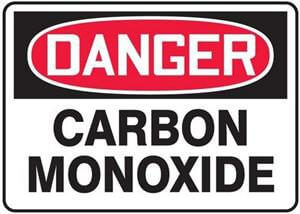When the Carbon Monoxide Alarm Screams
 WHAT IS CARBON MONOXIDE
WHAT IS CARBON MONOXIDE
Carbon Monoxide (CO) is an odorless and colorless gas. And it is deadly.
It is formed when we burn fuels like natural gas, charcoal, wood, oil, propane or kerosene to heat our homes or cook our food or even run a car engine. It becomes particularly deadly when carbon monoxide fills a home undetected because of a partially blocked chimney, poor ventilation or equipment malfunction.
WHAT HAPPENS WHEN WE’RE EXPOSED TO CARBON MONOXIDE
Carbon monoxide reduces the body’s ability to transport oxygen through the blood. The symptoms can appear flu-like: nausea, headache, pain, dizziness or breathing issues.
If carbon monoxide fills a home while inhabitants are sleeping, it is possible that the warning signs would never be noticed and people could die in their sleep from simple suffocation.
HOW TO PREVENT A CARBON MONOXIDE TRAGEDY
Because the gas is odorless and colorless, the best way to prevent exposure to the gas is to install carbon monoxide detectors in the home. They can be stand-alone devices or connected to a security system.
Like most things, the types of CO detectors vary according to price and features available. There are three primary ways CO detectors do their job: with a biomimetic sensor, metal oxide semiconductor, or electrochemical sensor. All will detect carbon monoxide and trip a warning signal using their different sensing capability.
It is generally considered that electrochemical sensors are the better choice. But regardless of the model or type, CO detectors should be placed around the home like smoke detectors: near bedrooms and on all levels of the home. They are recommended for garages too as well as placing near a source of carbon monoxide.
It is also recommended that homeowners should check local municipal or county codes for any regulations dictating placement or types of CO detectors that might be required.
NEVER IGNORE A CO ALARM
Symptoms of CO poisoning can come on slowly or rapidly. Regardless of the kind of CO detector installed, any alarm from a device should never be ignored. At the first sound of a CO or smoke detector, inhabitants should leave the house and get into fresh air; call 911 or the fire department directly from a neighbor’s home if you didn’t carry a cell phone. If for some reason, you are not able to leave the home, open windows and ventilate the house as best as possible and turn off any possible sources if that can be done safely.
Making the Right Choices
We know safety is important. That’s why, this month, we are giving away a free carbon monoxide detector with every residential service agreement.
To stay up-to-date on the latest carbon monoxide models and options sign-up to receive our newsletter each month. If you have any questions, please send me an email at shai@tempcontrolnj.wpengine.com or call at 732-218-8400.
Proud to use Coleman Equipment.
